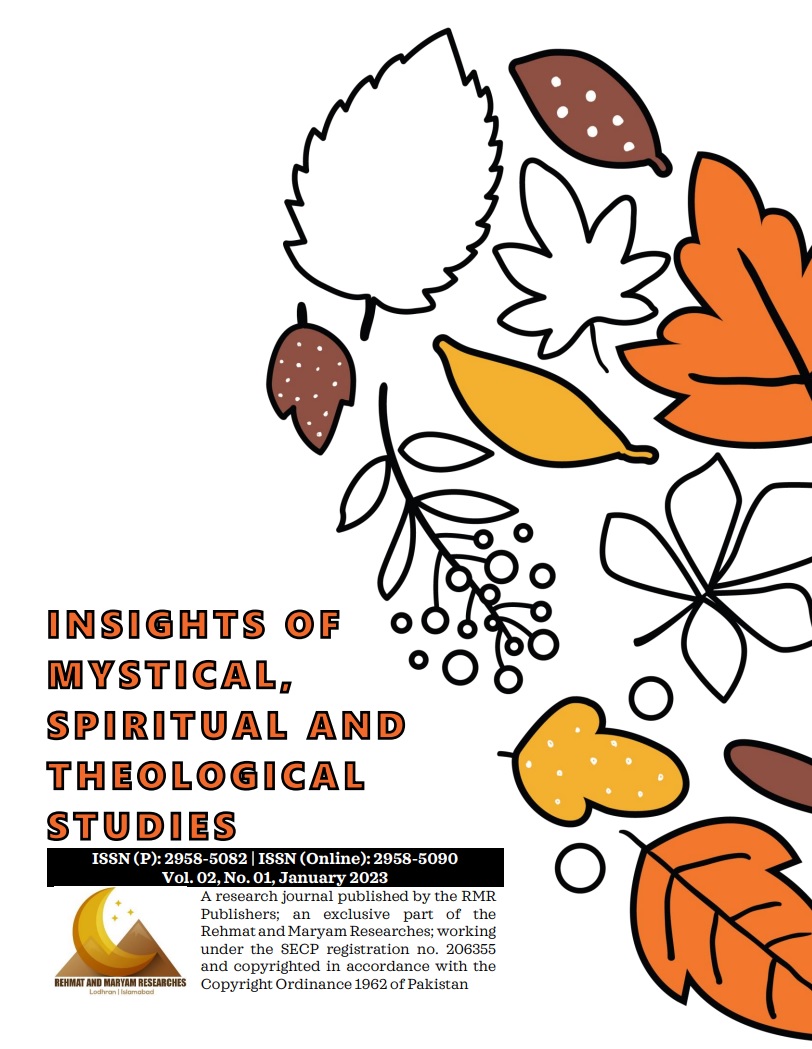Cliometric Study of Public Opinion; A Case Study of Inter-Faith Harmony and Multiculturalism in the Post-Soviet Azerbaijan
Keywords:
Armenian Aggression, Structural Functionalism, Shusha, Gorno-Badakhshan, Vilayat-e-Faqih, Hindu TempleAbstract
Since the inauguration of the Cliometric approach in the social sciences academia, it has been easy to highlight any sociopolitical or economic dilemma through statistics. Experts in mystical, spiritual and theological studies have also been facilitated by this approach. Therefore, this study utilizes the Cliometric approach to analyzing public opinion about the level(s) of inter-faith harmony in Azerbaijan. Demographically, till the end of 2022, Azerbaijan is significantly hosting Muslims (including Sunni-Hanafi, Sunni-Shafi, Sunni-Maliki, Twelver-Shia and Turkish-Sufi), Jews, and Christians (Armenian Catholics, Roman Catholics, Georgian Orthodox and Russian Orthodox). This study investigates the questions; How Post-Soviet Azerbaijan as a significant Muslim country has warm diplomatic relations with Israel? How, Post-Soviet Azerbaijan never observed sectarian clashes between the Sunnis and Shias, or between the Sunni segments? What are the secrets of inter-faith harmony and multiculturalism in Azerbaijan? And, whether Azerbaijan’s recapturing of Nagorno-Karabakh would accommodate Armenian Catholics with other religious/sectarian segments in Post-Soviet Azerbaijan.
References
Aliyev, I. (1995, November 12). The Constitution of the Republic of Azerbaijan. Retrieved from The Republic of Azerbaijan: https://president.az/en/pages/view/azerbaijan/constitution#:~:text=state%20of%20Azerbaijan-,I.,of%20Azerbaijan%20is%20a%20party.
Asim, D. M. (2020, July 23). Political Economy of Ethno-National Movements in the Post-Soviet Eurasian Region and Its Impacts on Iranian Azerbaijan Region. Bahawalpur, Punjab, Pakistan: Department of Political Science at the Islamia University of Bahawalpur.
Hajizadeh, S. Y. (2022, November 19). Reasons of Multiculturalism in Azerbaijan. (F. Sarkisov, Interviewer) Baku.
Karimova, A. (2016, January 11). Azerbaijan declares 2016 Year of multiculturalism. Retrieved from Azer News: https://www.azernews.az/nation/91533.html
Macron, E. (2020, November 11). France struggles to retain Karabakh sway after Armenia defeat. Retrieved from France 24: https://www.france24.com/en/live-news/20201127-france-struggles-to-retain-karabakh-sway-after-armenia-defeat
Mammadov, B. (2022, November 2022). Difference between Sunni-Hanafi and Sunni-Shafi Islam in Azerbaijan. (F. Sarkisov, Interviewer) Ganja.
Nabiyev, F. (2017). Azerbaijan is the land of tolerance. Retrieved from The Republic of Azerbaijan State Migration Service: https://migration.gov.az/en/press_detail/273#:~:text=Multiculturalism%20policy%20in%20Azerbaijan%20is,process%20among%20civilizations%20and%20cultures.
PIIF. (2022). Inter-Faith Harmony and Multiculturalism in Azerbaijan. Qom: Pak-Iran Intellectuals Forum.
Shafiyev, D. F. (2021, July 29). Azerbaijan and Israel: Friendship of values. Retrieved from Center of Analysis of International Relations: https://aircenter.az/en/single/azerbaijan-and-israel-friendship-of-values-754
US-State. (2022, June 2). 2021 Report on International Religious Freedom: Azerbaijan. Retrieved from US Department of State: https://www.state.gov/reports/2021-report-on-international-religious-freedom/azerbaijan/#:~:text=Ethnic%20Azerbaijanis%20are%20mainly%20Muslims,Baku%20and%20other%20urban%20areas.
Downloads
Published
How to Cite
Issue
Section
Categories
License
Copyright (c) 2022 Insights of Mystical, Spiritual and Theological Studies

This work is licensed under a Creative Commons Attribution-NonCommercial-NoDerivatives 4.0 International License.

